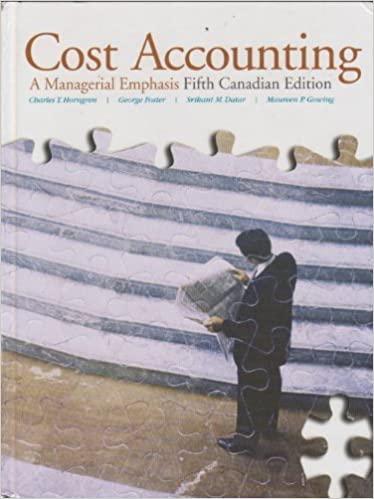Target cost, activity-based costing systems (continuation of 12-29). Assume all the information in Problem 12-29. Farnham has
Question:
Target cost, activity-based costing systems (continuation of 12-29). Assume all the information in Problem 12-29. Farnham has just received some bad news. A foreign competitor has introduced products very similar to P-41 and P-63. Given their announced selling prices, Farnham estimates the P-41 clone to have a manufacturing cost of approxi- mately $975 and the P-63 clone to have a manufacturing cost of approximately $560. He calls a meeting of product designers and manufacturing personnel at the printer division. They all agree to have the $975 and $560 figures become target costs for redesigned versions of EP's P-41 and P-63, respectively. Product designers examine alternative ways of designing printers with comparable performance but lower cost. They come up with the following revised designs for P-41 and P-63 (termed P-41 REV and P-63 REV, respectively):
REQUIRED 1. Define target cost per unit.
2. Using the activity-based costing system outlined in Problem 12-29, compute the manufacturing costs of P-41 REV and P-63 REV. How do they compare with the target costs er unit?
3. lun the differences between P-41 and P-41 REV and between P-63 and P-63 REV.
4. Assume now that Johan Farnham has achieved major cost reductions in one of the activity areas. As a consequence, the allocation rate in the assembly management activity area will be reduced from $60 to $49.40 per assembly-hour. How will this activity-area cost reduction affect the manufacturing costs of P-41 REV and P-63 REV? Comment on the results.LO1
Step by Step Answer:

Cost Accounting A Managerial Emphasis
ISBN: 9780135004937
5th Canadian Edition
Authors: Charles T. Horngren, Foster George, Srikand M. Datar, Maureen P. Gowing





